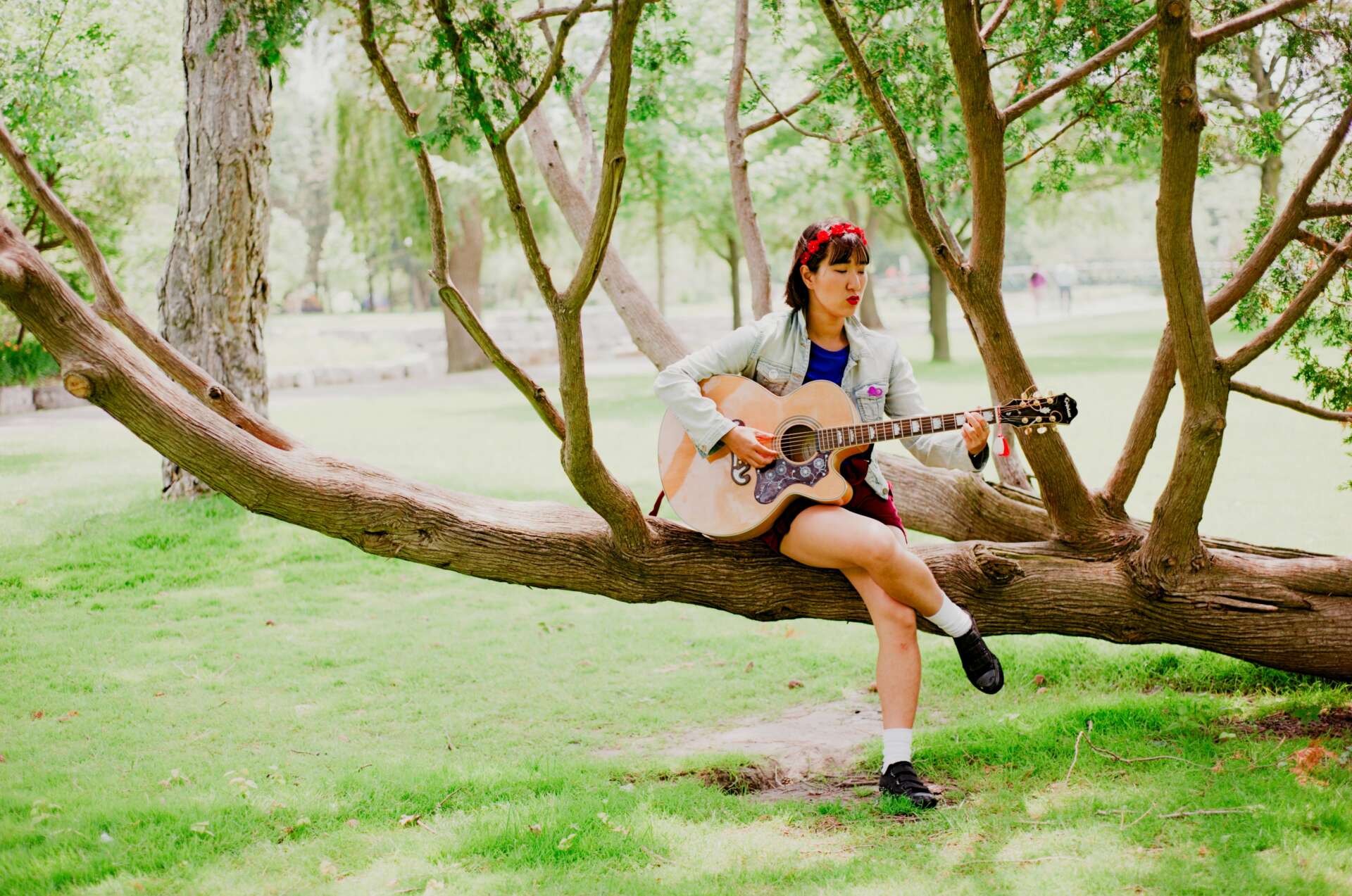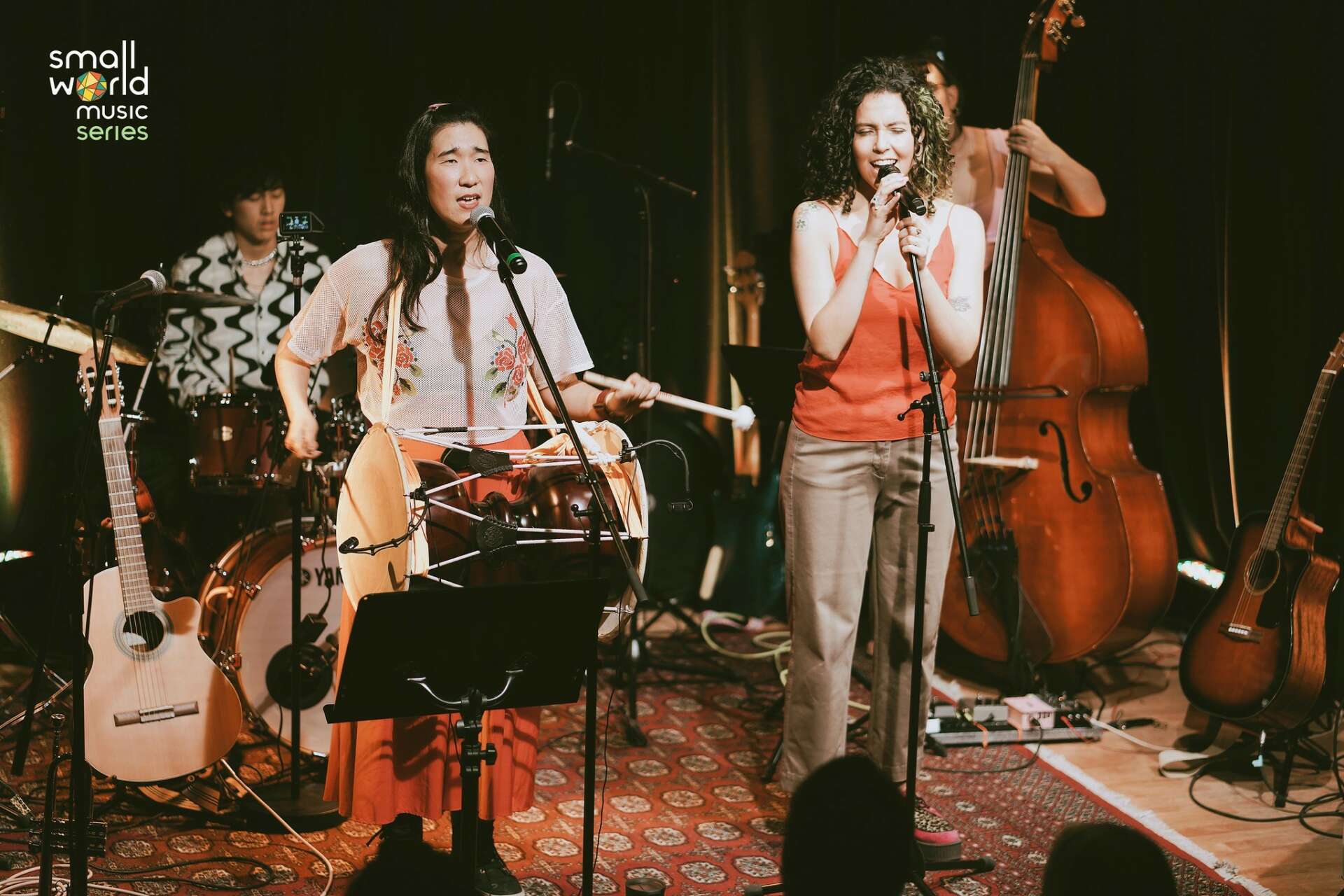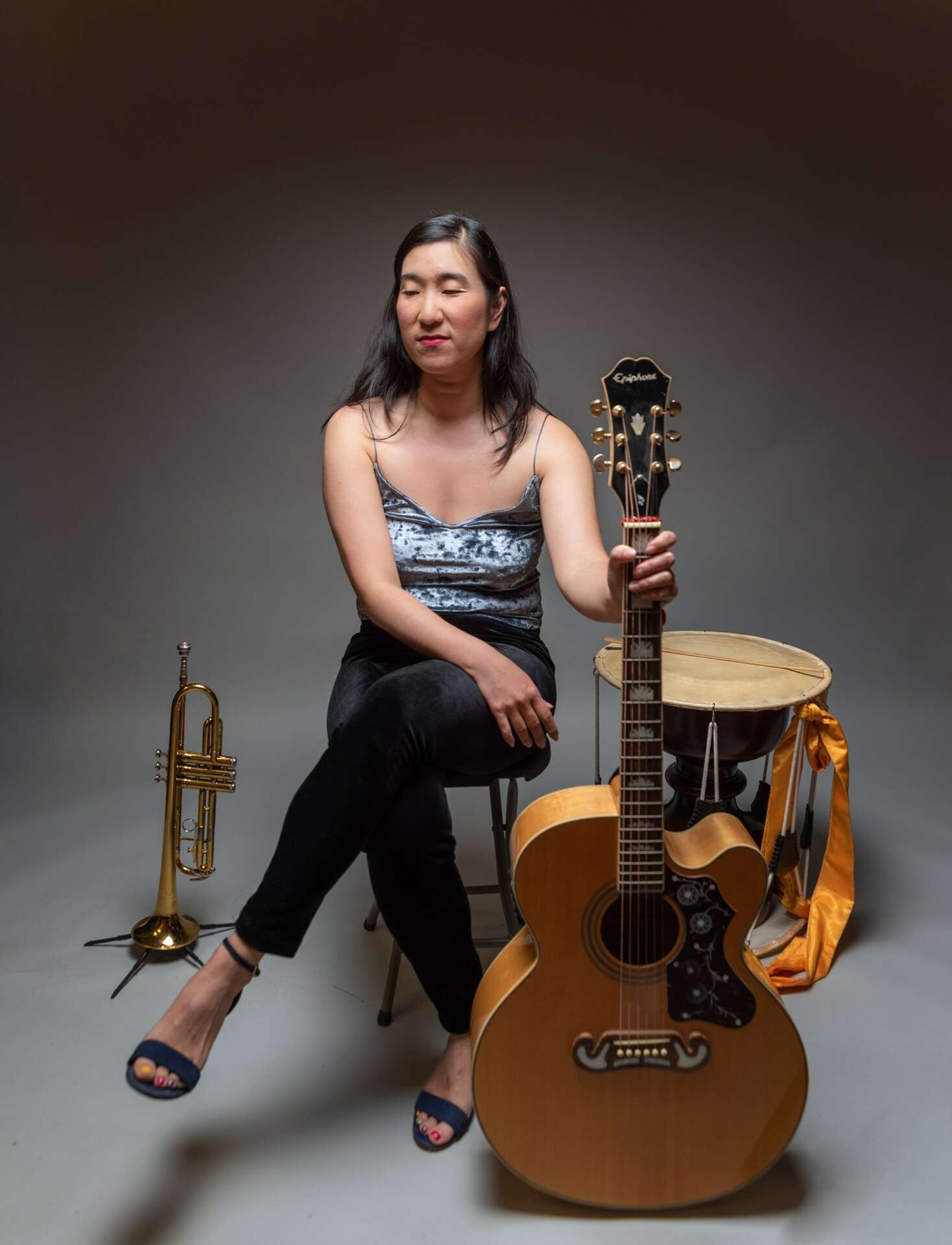Alright – so today we’ve got the honor of introducing you to Janice Jo Lee. We think you’ll enjoy our conversation, we’ve shared it below.
Alright, Janice Jo thanks for taking the time to share your stories and insights with us today. Can you open up about a risk you’ve taken – what it was like taking that risk, why you took the risk and how it turned out?
As an independent musician and spoken word poet, I am a one person record company. If I want to tour and reach new audiences, that is a project I take on from scratch. It is a huge financial and artistic risk to enter new markets. The main thing I do is perform live for audiences. I am driven to do it because I know that my concert is valuable. I know that I create music medicine, that performing for people is a nourishing experience for all of us.
Currently I’m on a tour with a trio for the first time. I have toured Canada a few times solo, but it is lonely and hard. I am excited to have more musicians with me, but the cost has tripled. It is a financial risk I am taking for the added artistic value. The touring grant I submitted was not approved, so the tour may not break even financially. But this is a risk I was willing to take because it is an investment, to reach new audiences. Already we have been invited back next summer for a festival performance. So the risk is paying off.


Awesome – so before we get into the rest of our questions, can you briefly introduce yourself to our readers.
I am a multidisciplinary artist. I write and perform spoken word poetry, music, theatre and comedy.
I am a second generation Korean-Canadian settler based in Tkaronto (Toronto), Ontario. I am a folk-soul-jazz singer songwriter, composer-sound designer, spoken word poet, theatre maker, and arts and anti-oppression facilitator.
My artwork has always been one with her activism. My songs, poems and plays are immersed in issues of gender empowerment, community, climate change, the environment and antiracism. On stage I perform spoken word pieces and songs built on layers of cascading harmonies. I play guitar, looping pedal, trumpet, Korean janggu drum. I try to conjure warm energy, asks questions about our times, and leave audiences rejuvenated and aglow.
I was born in Toronto to a Korean immigrant family, and grew up riding bikes, singing in choir, and preferring soccer to my piano lessons. By the time I graduated from Wilfrid Laurier University with a major in English Literature and minor in Political Science, I was a songwriter performing locally with The Radical Choir. It was in this collective that I began my early practice as a folk musician – leading sing-alongs, composing songs inspired by local issues, and performing in community.
In the first ten years of my career in Kitchener-Waterloo I steered the emergence of its next generation of spoken word poets as the director of the KW Poetry Slam. As a folk music producer, I cultivated the local scene as a series curator and programmer. As an outspoken activist and organizer I brought forward uncomfortable conversations around racism and white supremacy in the local social justice culture and queer community.
In the next few years I toured the country and screened a full-length documentary called The Legend of Sing Hey (Dir. Becca Redden) at Rainbow Reels Waterloo and Toronto Queer Film Festival. I wrote and performed a critically-acclaimed one-woman musical titled Will You Be My Friend, (Dir. Matt White) a searing satire on cultural assimilation and whiteness in Canada. And I composed original music for three plays: Shaded by Nada Abousaleh, I Don’t Know and the Dora-nominated Suitcase, both by Syrian-Canadian playwright-actor Ahmad Meree. During the lockdown I expanded my practice facilitating anti-oppression conversations for universities and organizations such as Folk Alliance International, U of T School of Social Work, and Vancouver Poetry House.
This year I released my long anticipated song cycle album titled Ancestor Song. Drawing inspiration from my island-dwelling family roots in South Korea these melodies access a musical spirit deep in my blood memory. Melodies I feel have been passed down to me by my ancestors, who gave me the voice in my chest and my body as instrument. The songs are folk in tradition, concerned with contemporary issues of the people and land. The melodies are rousingly thematic and supported by expansive jazz harmonies. Many songs depict water as a force of healing, power, drowning and destruction.

In your view, what can society to do to best support artists, creatives and a thriving creative ecosystem?
Word of mouth is still the most effective way to support and promote artists. Tell your friends about the artists you like. Share their work and add your own comments on why you like it. And buy directly from the artist. For example, until I reach a million streams on Spotify, I make no money off of streaming. In fact, I pay to put my music on streaming services. If you purchase my album once from my website, or even buy my sticker for $2, that will support me more than streaming ever will. The music industry has evolved to disenfranchise musicians. The album has been taken away from us a product, because Streaming giants have successfully changed the music listener’s habits towards playlists and not albums. So we can’t rely on album sales anymore. And even the concert was taken away from the musician during the lockdown years. These days, audiences expect musicians to put up performance videos for free on Youtube and social media, so in a lot of ways the performance has also been taken away as a product. It gets harder all the time to make a living. So buy your tickets in advance and buy merch and music directly from musicians.

Any insights you can share with us about how you built up your social media presence?
I have a modest social media following of 3500 followers and they are mostly organic follows. I haven’t had any big viral videos. My followers are actively engaged in my posts and my artwork. I gained this following by being authentic to myself as an artist. My brand is me being me. I think it’s key that we don’t hop on social media trends if they don’t feel authentic or a natural extension of what we are doing.
A key tip is that the content that you post on that platform, should look like it belongs on that platform. For example, Youtube is now the place for the most produced video content that is high definition. And TikTok videos should look like they were filmed on your phone. Audiences like to feel that they are watching first person content that was created directly by the artist they follow. So use the text fonts from each platform and don’t overproduce it if it doesn’t need to be.


Contact Info:
- Website: http://janicejolee.ca
- Instagram: https://www.instagram.com/janjolee/
- Facebook: https://www.facebook.com/janicejolee
- Twitter: https://twitter.com/JaniceJoLee
- Youtube: https://www.youtube.com/@janicat27/videos
- Other: https://www.tiktok.com/@janjolee
Image Credits
Bangishimo Stefan Chirila Vicky Ta


